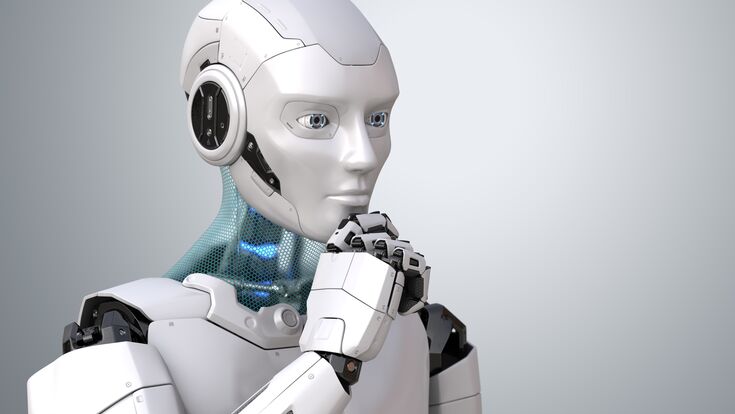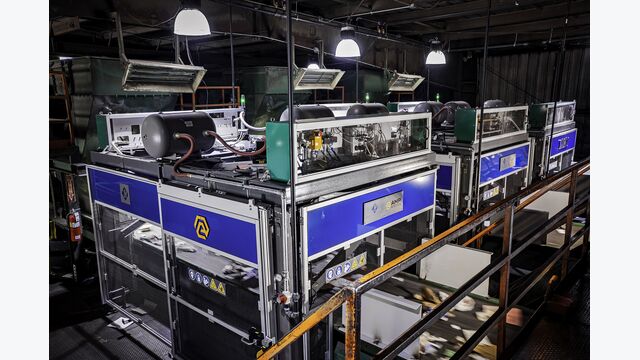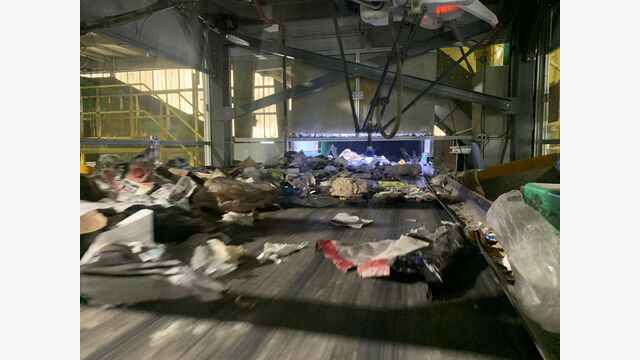Business Talk AI : Let's talk about Artificial Intelligence for recycling with AMP Robotics

What are the current challenges in developing recycling technology?
Recycling involves infinite variability in the kinds, shapes, and orientations of the objects found on a conveyor belt, requiring nearly instantaneous identification along with the quick dispatch of a new trajectory to the robot arm.
Training a neural network to detect objects in the recycling stream is not easy—but it’s an entirely different challenge when you consider the physical deformations that these objects can undergo by the time they reach a recycling facility. They can be folded, torn, smashed, or partially obscured by other objects.
We train our systems by giving them images of materials belonging to each material category, sourced from recycling facilities around the world. AMP now has the world’s largest data set of recyclable material images for use in machine learning.
There’s also the challenge of staying up to date with the continual changes in consumer packaging. Any mechanism that relies on visual observation to learn associations between packaging and material types will need to consume a steady stream of data to ensure that objects are classified accurately.
Read more business talks here!
How important is digitization and artificial intelligence in the recycling process?
Material characterization in recycling has been a longstanding challenge due to the complexity of mixed material streams, compounded by ongoing changes in consumer packaging. These obstacles create impediments to accurate data collection and prevent a clear understanding of what goes into and comes out of the different stages that support recycling. Operators have only snapshots of material composition gathered through manual waste audits and human observations.
Materials recovery facilities (MRFs) are centralized material hubs that take in mixed material streams, sorting happens, and commodities and residuals come out. Without visibility on the front end, it’s difficult to control or adapt to inherent material variability. The industry has adjusted by constructing MRFs that tolerate wide-ranging inbound material specifications for a limited number of marketable bale products. This generates an abundance of residuals and low-value baled products. Increasing recycling supply requires better AI-powered material characterization data.

AMP Robotics continues to pioneer the digitization of recycling to leverage the MRF as an information hub. Our material characterization software, AMP Clarity, enables the recognition and classification of recyclables that flow through different recovery stages of recycling. This industry innovation serves as a breakthrough in the effort toward providing measurable transparency on the recyclables captured and missed during different recycling processes, as well as confirming the composition of recovered material bales destined for resale to end markets in the supply chain.
AI is the enabling technology essential for MRFs to generate and capture data to optimize recycling operations. Vision-based AI software identifies and characterizes objects in real-time, digitizing each item that passes by. These items are captured as a new form of data, including object counts, packaging descriptions, and more. AMP has deployed hundreds of robots and sensors that process billions upon billions of objects on conveyor belts in MRFs today. This enables automated and continuous characterization of this material, with material categories that continue to expand. The more AI-based robots and sensors deployed into production, the more a network effect is created, which exponentially increases the sorting intelligence. When a challenging packaging type or new material emerges, AMP captures the imagery and can train its AI to identify the object. This knowledge is then deployed throughout the fleet of robots, expanding the AI’s material knowledge.
Better data and data capture technology provide opportunities for consumer packaged goods companies, retailers, and packaging manufacturers to understand the quality, flow, and recovery of their specific containers and packaging. Our technology can help producer initiatives to increase recycling rates and create new value streams for recyclables, ultimately aiding their pursuit of recycled content goals. As Extended Producer Responsibility (EPR) schemes emerge and mature, sensors growing in the fleet of MRFs can help satisfy the demand for reporting recovery rates. Data collection, measurement, and material characterization for recycling also create a mechanism to support federal, state, and local government programs focused on landfill diversion goals and recycled content standards to advance a more circular economy.
What are the advantages of automated processes compared to manual labour? Are there still processes that manual workers better do?
Automation in recycling drives consistency, as robots can work 24/7. They don’t tire, nor do they need breaks. Plus, they can work on faster-moving belts than humans. Their consistency also results in a higher quality of recovered commodities. Robots are flexible; our systems can be adjusted to reflect material stream changes, commodity prices, and more. Robots can work in areas and on materials where volumes don’t warrant a human because they can multitask and target a variety of materials in lieu of just one or two.
For many of our customers, the addition of robots has allowed them to shift staff to higher-skilled positions with the facility—roles in maintenance, as an equipment operator, or a route driver.
What solutions does AMP Robotics offer in that segment?
AMP Cortex is AMP’s high-speed robotic sorting system guided by our AI technology. Our robots intelligently perform physical tasks of sorting, picking, and placing material to achieve up to 99% accuracy and 80-120 picks per minute.
AMP Vision is a modular computer vision system designed to drop into key stages of recycling operations to better understand material flow from inbound processing to bale QC to the end of the line.
AMP Clarity is our material characterization and robot performance software solution that allows users to monitor real-time material composition and performance measurement throughout a facility. We’ve recently introduced new Clarity features including mass estimation, robot pick assignments, alerts, and status tracking, and expanded reporting capabilities.
AI is the enabling technology essential for MRFs to generate and capture data to optimize recycling operations.Amanda Marrs, AMP Robotics
Can you describe how the technology works?
There are three components of our system, and you can think of them as the eyes, the brain, and the arms. Cameras, the eyes, record material as it comes down a conveyor to be picked and sorted. The brain, which is the AI, converts these video camera images into data, capturing and categorizing everything it recognizes. Then, software guides the robotic “arms” to pick and place the material to be recovered. All of this happens at superhuman speed with consistent precision and extremely high accuracy.
How maintenance-intensive is this technology?
As with any equipment, AMP systems require periodic maintenance inclusive of quick change-out of consumable parts, routine inspection, and preventive maintenance for wear parts. Maintenance activities are short with remote support available from AMP’s service team and tooling provided to assist with maintenance activities.
What sets AMP Robotics technology apart from others?
Our proprietary AI platform, AMP Neuron, recognizes more than 50 billion objects on an annual basis—a number that continues to exponentially increase as our install base expands. We’ve seen the most materials, in more permutations. AI accuracy and performance is built on training a platform on as much data as possible. As our fleet of automation continuously grows across the globe, our AI exponentially increases its ability to learn from data collected from different locations, growing smarter and more effective every day. A robot in a UK sorting facility is helping robots in the U.S., Spain, or any other location improve their ability to identify items that can be recycled.
Is the industry willing to adapt to new technologies?
The recycling industry is adapting to new technologies because of labor constraints and needed efficiencies. The COVID-19 pandemic provides a recent case study. The pandemic forced many recycling businesses to suspend operations due to concerns for worker safety, while simultaneously increasing demand for high-quality recycled feedstock to overcome supply chain interruptions and shifts in raw material availability. These effects accelerated demand for and adoption of our technology, both among new and existing customers. As a demonstration of the pace of adoption, we installed our first robot in late 2016, and today, our fleet of approximately 275 robots is distributed across three continents.
In the last year, we’ve extended our partnership with Evergreen, one of North America’s three largest producers of food-grade recycled polyethylene terephthalate (rPET). Evergreen, which has grown through acquisitions to four locations across North America from its original facility in Clyde, Ohio, now has 15 of our robots installed or planned across three facilities.
AMP’s technology identifies and sorts green and clear PET from post-consumer bales of plastic soft drink bottles at speeds up to three times faster and at a higher accuracy than manual sorters can achieve. Evergreen then recycles the material into reusable flakes or pellets, which it sells to end markets as feedstock for new containers and packaging. With AMP’s robots focused on refining the quality of material, separating plastics more precisely by color, Evergreen has seen a notable improvement in purity along with pick rates of up to 120 bottles per minute—an increase of up to 200%. The robots are removing up to 90% of contamination, on average, across different lines at Evergreen’s Clyde facility.
We also expanded our partnership with Waste Connections, our largest customer. Since late 2020, Waste Connections has booked or deployed 50 of AMP’s systems on plastic, fiber, and residue lines, becoming the largest operator of AI-guided robotics in the industry. Waste Connections cites the robots’ reliability and the quality of the end product they ensure as reasons for the ongoing partnership with AMP.
Will there be more digitization and AI in recycling technology in the future?
The digitization of scrap objects in the MRF opens up many potential applications. The first two that are deployed into MRFs today are robotic sorting and the descriptive and diagnostic analytics provided by standalone sensors. As the sensors become distributed throughout a MRF, we’re able to help the MRF become a more data-driven facility to reduce costs and increase revenue. Currently, the MRF is a centralized material hub, but the proliferation of these sensors begins to transform MRFs into information hubs.
Data capture in MRFs can also influence the design of new facilities. For example, AMP’s application of AI for material identification and advanced automation has matured to the point where it’s become viable to develop high-diversion secondary sortation facilities that are economical to deploy and sustain nationally. Through our secondary sortation model, AMP recovers mixed paper, metals, and a portfolio of #1-#7 plastics in a variety of form factors and attributes with high precision and purity, with a special focus on plastic blends uniquely enabled by AI. We resell these commodities, including bespoke chemical and polymer blends needed by processors and manufacturers, to end-market buyers. This secondary sortation model is helping to address the millions of tons of recyclables and billions of dollars worth of material feedstock lost to landfill despite the demand for high-quality recycled content from consumer packaged goods companies and brand owners
Where do you see the biggest market growth?
Demand for robotics to retrofit existing recycling infrastructure continues to thrive; among historic demand for recycled commodities of all types, the industry needs capacity to meet the 2025 goals of consumer packaged goods companies that have committed to the use of post-consumer recycled (PCR) content.
We see growth in a number areas, from the breadth and precision of our material characterization capabilities, to new sortation verticals, like e-scrap, construction and demolition debris, and organics, to increasing use of data to improve recycling operations and help achieve sustainability targets.



